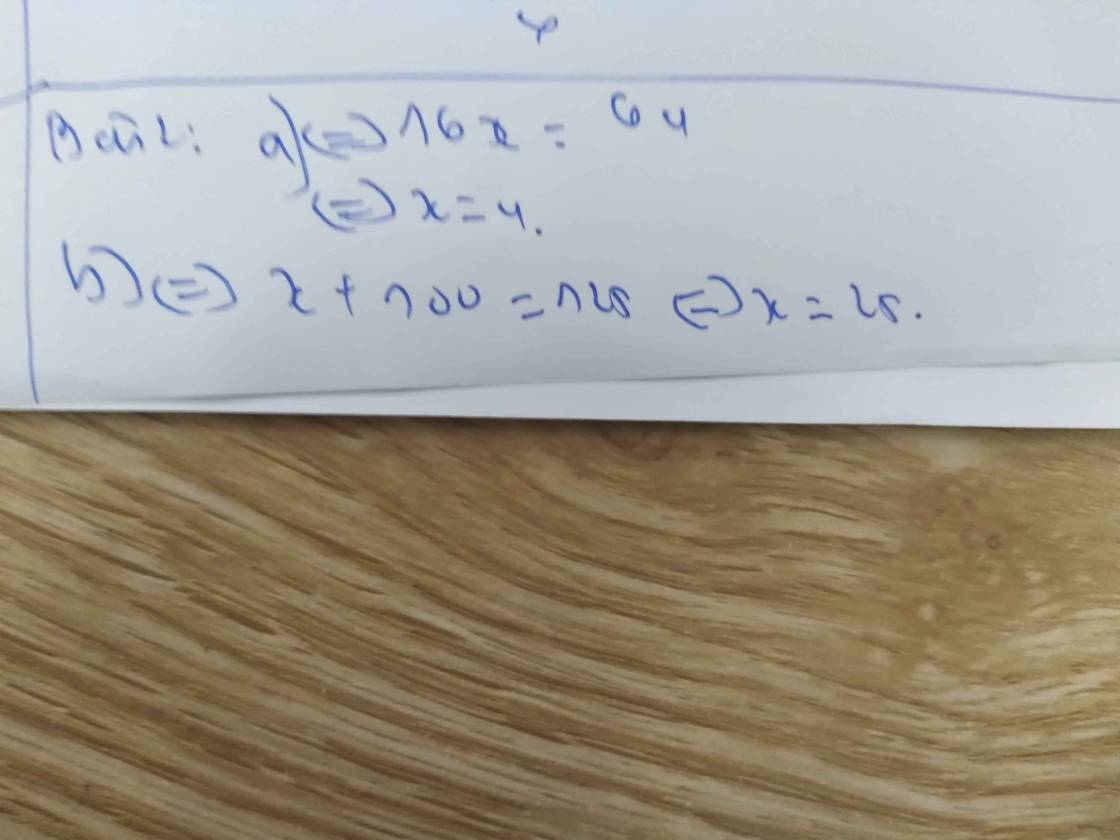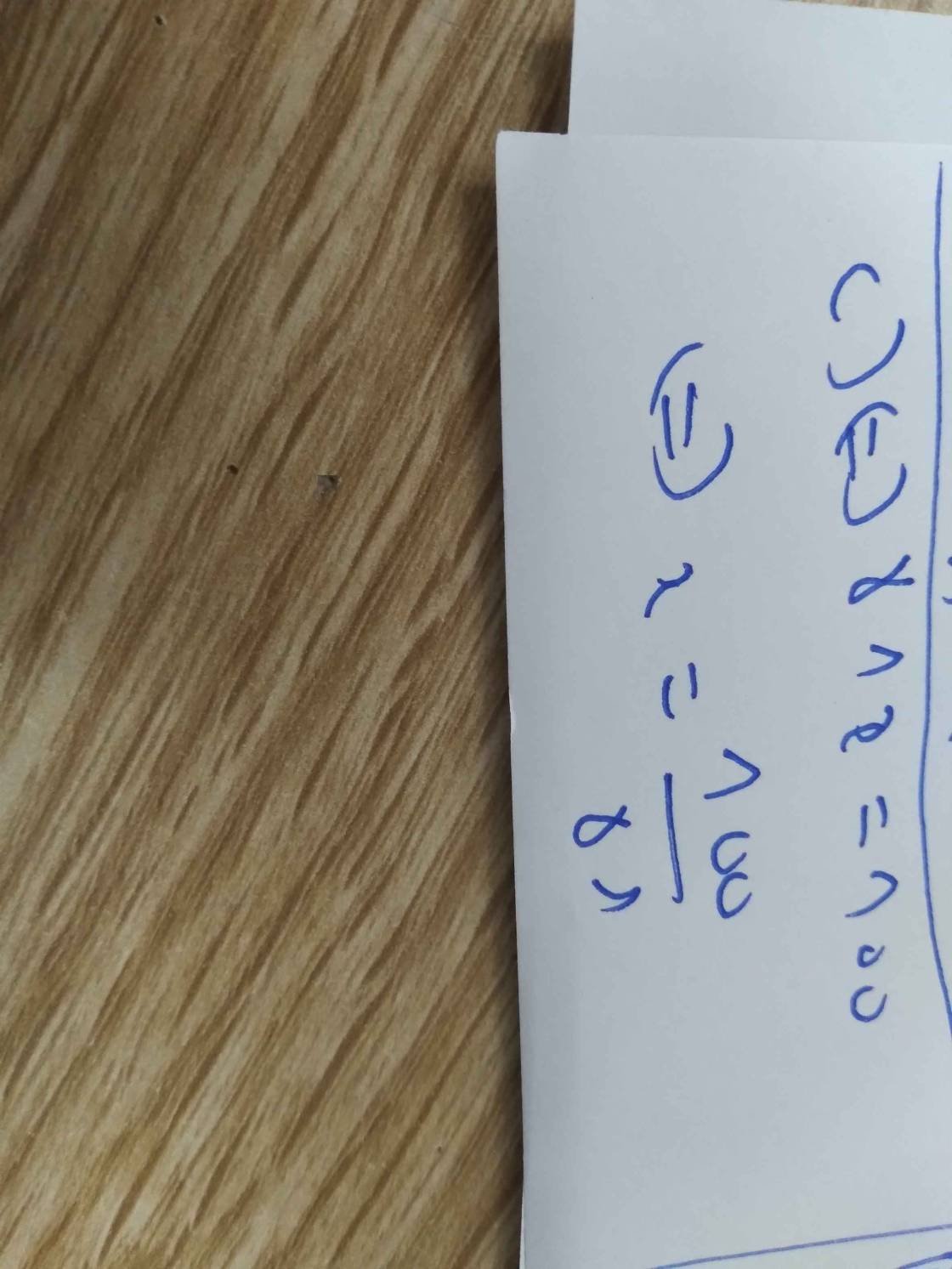tìm a ; b; c biết 0<a<b<c và tổng 2 số ngẫu nhiên là 488 và tất cả các số là số tự nhiên.
Hãy nhập câu hỏi của bạn vào đây, nếu là tài khoản VIP, bạn sẽ được ưu tiên trả lời.


ĐKXĐ: \(x\ge0;x\ne4\)
\(A=\dfrac{x}{\left(\sqrt{x}-2\right)\left(\sqrt{x}+2\right)}+\dfrac{\sqrt{x}+2}{\left(\sqrt{x}+2\right)\left(\sqrt{x}-2\right)}+\dfrac{\sqrt{x}-2}{\left(\sqrt{x}-2\right)\left(\sqrt{x}+2\right)}\)
\(=\dfrac{x+2\sqrt{x}}{\left(\sqrt{x}-2\right)\left(\sqrt{x}+2\right)}=\dfrac{\sqrt{x}\left(\sqrt{x}+2\right)}{\left(\sqrt{x}-2\right)\left(\sqrt{x}+2\right)}=\dfrac{\sqrt{x}}{\sqrt{x}-2}\)
b. \(x=36\Rightarrow A=\dfrac{\sqrt{36}}{\sqrt{36}-2}=\dfrac{6}{6-2}=\dfrac{3}{2}\)
c. \(A=-\dfrac{1}{3}\Rightarrow\dfrac{\sqrt{x}}{\sqrt{x}-2}=-\dfrac{1}{3}\Rightarrow3\sqrt{x}=2-\sqrt{x}\)
\(\Rightarrow4\sqrt{x}=2\Rightarrow\sqrt{x}=\dfrac{1}{2}\Rightarrow x=\dfrac{1}{4}\)
d. \(A>0\Rightarrow\dfrac{\sqrt{x}}{\sqrt{x}-2}>0\Rightarrow\sqrt{x}-2>0\Rightarrow x>4\)
e. \(A=\dfrac{\sqrt{x}-2+2}{\sqrt{x}-2}=1+\dfrac{2}{\sqrt{x}-2}\in Z\Rightarrow\sqrt{x}-2=Ư\left(2\right)\)
\(\Rightarrow\sqrt{x}-2=\left\{-2;-1;1;2\right\}\)
\(\Rightarrow\sqrt{x}=\left\{0;1;3;4\right\}\Rightarrow x=\left\{0;1;9;16\right\}\)
a: Ta có: \(A=\dfrac{x}{x-4}+\dfrac{1}{\sqrt{x}-2}+\dfrac{1}{\sqrt{x}+2}\)
\(=\dfrac{x+\sqrt{x}+2+\sqrt{x}-2}{\left(\sqrt{x}-2\right)\left(\sqrt{x}+2\right)}\)
\(=\dfrac{\sqrt{x}}{\sqrt{x}-2}\)
b: Thay x=36 vào A, ta được:
\(A=\dfrac{6}{6-2}=\dfrac{6}{4}=\dfrac{3}{2}\)
c: Để \(A=-\dfrac{1}{3}\) thì \(3\sqrt{x}=-\sqrt{x}+2\)
\(\Leftrightarrow4\sqrt{x}=2\)
hay \(x=\dfrac{1}{4}\)

a: Để A là phân số thì n+5<>0
hay n<>-5
b: Để A=-1/2 thì n-1/n+5=-1/2
=>2n-2=-n-5
=>3n=-3
hay n=-1
c: Để A là số nguyên thì \(n-1⋮n+5\)
\(\Leftrightarrow n+5\in\left\{1;-1;2;-2;3;-3;6;-6\right\}\)
hay \(n\in\left\{-4;-6;-3;-7;-2;-8;1;-11\right\}\)

a: A=3,5:40%=8,75
b: 1/4 của A là 1/4*8,75=2,1875
c: 75% của A là 3/4*8,75=6,5625

Ta có: \(A=\frac{6n-9+13}{2n-3}=\frac{3\left(2n-3\right)+13}{2n-3}\)
Mà: 3 ( 2n - 3 ) chia hết cho 2n - 3
=> 13 chia hết cho 2n - 3 => 2n - 3 E Ư(13) = {1,-1,13,-13}
=> 2n E {4,2,16,-10}
Ta có bảng sau:
| 2n | 4 | 2 | 16 | -10 |
| n | 2 | 1 | 8 | -5 |

Tớ nghĩ là cộng vì dấu ''+'' nằm dưới dấu ''='' mà, chắc là quên ấn nút ''Shift'' ấy mà!![]()

abc:(a+b+c)=100
aba=(a+b+c)x100
abc=a x100+bx100+cx100
ax100+bx10+c=ax100+bx100+cx100
( đề có vẻ sai )
abc:(a+b+c)=100
aba=(a+b+c)x100
abc=a x100+bx100+cx100
ax100+bx10+c=ax100+bx100+cx100
( đề có vẻ sai ) Nếu bn cảm thấy đúng thì k cho mình nhé!Học Tốt

